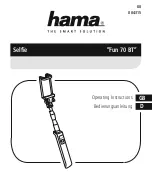
FDA, medical device manufacturers, and many other
groups, was completed in late 2000. This standard will
allow manufacturers to ensure that cardiac pacemakers
and defibrillators are safe from wireless phone EMI.
FDA has tested hearing aids for interference from
handheld wireless phones and helped develop a
voluntary standard sponsored by the Institute of Electrical
and Electronic Engineers (IEEE). This standard specifies
test methods and performance requirements for hearing
aids and wireless phones so that no interference occurs
when a person uses a “compatible” phone and a
“compatible” hearing aid at the same time. This standard
was approved by the IEEE in 2000.
FDA continues to monitor the use of wireless phones for
possible interactions with other medical devices. Should
harmful interference be found to occur, FDA will conduct
testing to assess the interference and work to resolve the
problem.
For more information, please visit the FDA website at
http://www.fda.gov/cellphones.
Emergency Calls
Never rely solely upon your wireless phone for essential
communications (e.g., medical emergencies), if it can
be avoided, since a wireless phone requires a complex
combination of radio signals, relay stations and landline
networks for its operation. Consequently, emergency
212
Содержание BOULDER GzOne
Страница 1: ...V CAST PHONE with PUSH TO TALK User Guide ...
Страница 242: ...NOTES ...
















































